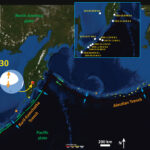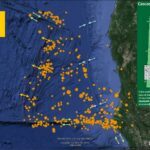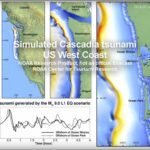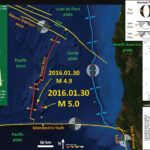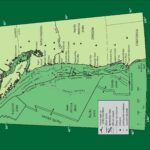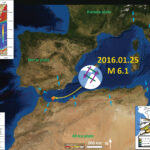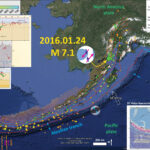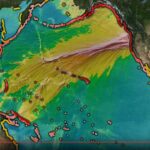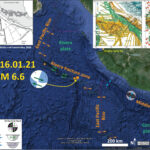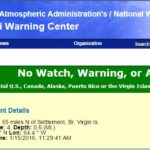We just had an earthquake located along the Kamchatka Peninsula. Here is the USGS website for this M 7.2 earthquake. This earthquake was fairly deep and approximately east of a large and very deep earthquake from 2013. Here is my…
Earthquake Animation: Gorda Plate 1900-2016 M >+ 4.5
Following the earthquake pair today, I put together an animation showing the seismicity for this region between 1900 and 2016.01.30. I searched the USGS NEIC database for earthquakes of magnitude greater than or equal to M = 4.5. Here is…
Cascadia subduction zone: M 9.0 tsunami simulation video
NOAA Center for Tsunami Research just released an animation that shows a numerical simulation of what a tsunami may appear like when the next Cascadia subduction zone earthquake occurs. I present a summary about the CSZ tectonics on a 316th…
Earthquake Report: Gorda!
There was just a pair of earthquakes near the Gorda rise. There was first an earthquake of magnitude M = 5.0, followed by a M = 4.9. The 5.0 appears to be within the GP, but the 4.9 seems to…
Cascadia subduction zone: 316 years ago tonight!
In commemoration of the last known Cascadia subduction zone earthquake, I present a summary background material here. Since last years commemoration, there have been a few additions. I made some updates on 2018.01.26. Most notably was a pair of articles…
Earthquake Report: Mediterranean!
We just had a M 6.1 earthquake and a few aftershocks (M 4-5) in the western Mediterranean, Here is the USGS website for this earthquake. Here is a map showing the 5 largest earthquakes as circles. There is a legend…
Earthquake Report: Alaska!
Early this morning, we had a M 7.1 earthquake in the Cook Inlet of Alaska. Here is the USGS web page for this earthquake. Due to the magnitude and depth for this earthquake, there is no tsunami risk for CA/OR/WA.…
Cascadia Update: new tsunami simulation!
The NOAA/NWS/Pacific Tsunami Warning Center has updated their animation of the simulation of the 1700 “Orphan Tsunami.” Source: Nathan C. Becker, Ph.D. nathan.becker at noaa.gov I provide some other background information about Cascadia here: Cascadia’s 315th Anniversary 2015.01.26 Earthquake Information…
Earthquake Report: Rivera fracture zone, Mexico!
We just had an earthquake offshore of Colima, Mexico. This earthquake appears associated with the Rivera fracture zone (RFZ), a transform plate boundary separating the Rivera plate to the north and the Pacific plate to the south. The RFZ connects…
Hoax Alert: Cascadia Buoy!
Today there was a bantering about a buoy several hundred miles offshore of Oregon. A website had posted a hoax about how the buoy data suggested that there was movement along the Cascadia subduction zone. These hoaxes happen rather frequently.…

